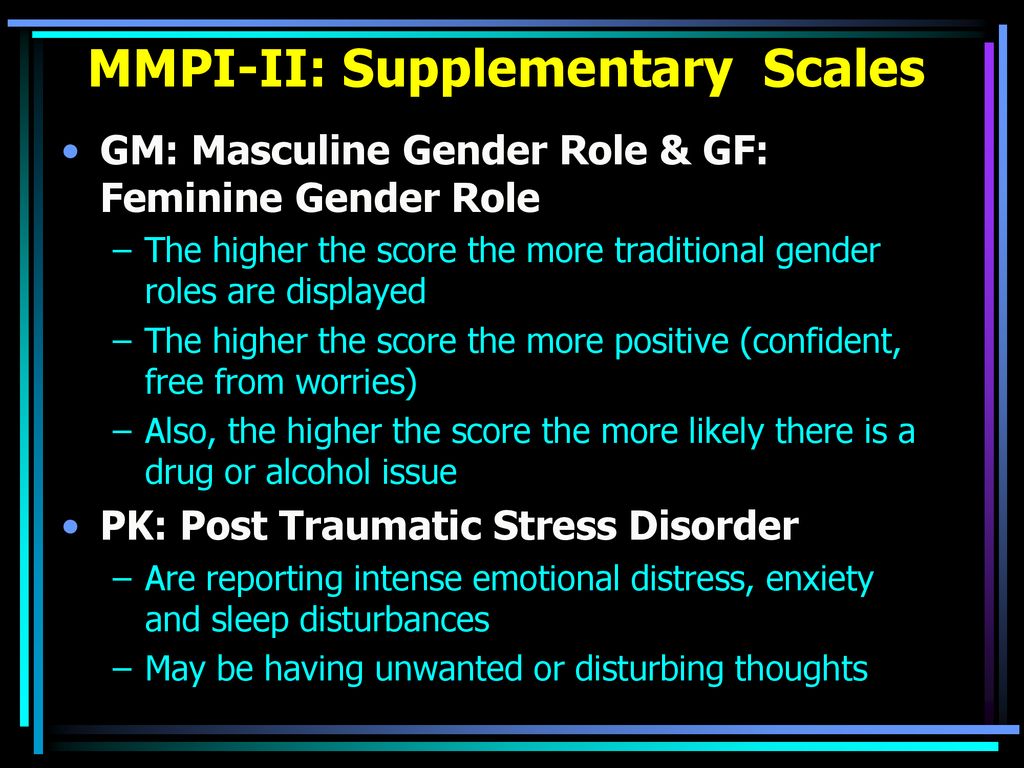

National norms have been restandardized and are more representative of the present U.S. MMPI-2 assesses major psychological characteristics that reflect an individual's social and personal maladjustment, including disabling psychological dysfunction. It is normed entirely on clinical samples and norms are applicable only to individuals who evidence psychological problems or who are engaged in a program of professional psychotherapy or psychodiagnostic evaluation. Most patients can complete the assessment in 20 to 30 minutes. The assessment has 175 items, written at the eighth-grade reading level. Changes in version III include: the addition of one Clinical Personality Patterns scale, Depressive the addition of a Post-Traumatic Stress Disorder scale 95 new items were introduced to replace 95 items in MCMI-II the item weighting system was changed. ) who must make assessment and treatment decisions about individuals with emotional and interpersonal difficulties. The Millon Clinical Multiaxial Inventory III (MCMI-III) was designed to provide information to clinicians (psychologists, psychiatrists, counselors, Etc. Procedures were added for correcting distortion effects. In the Clinical Syndromes area these new scales were added: eating dysfunctions, substance-abuse proneness, anxious feelings, depressive affect, and suicidal tendency. In the Expressed Concerns Area the academic confidence scale was deleted and childhood abuse scale was added. Four new Personality Patterns scales have been added: doleful, forceful, self-demeaning and borderline tendency. It was developed for clinical, residential, and correctional settings for the evaluation of troubled adolescents, and may be used for developing diagnoses and treatment plans as an outcomes measure. It is a 160-item 31-scale, self-report inventory designed specifically for assessing adolescent personality characteristics and clinical syndromes. The Millon Adolescent Clinical Inventory (MACI) is a replacement for the Millon Adolescent Personality Inventory. The subtest sections fall into three main areas: personality styles (eight personality patterns) expressed concerns (eight scales) and behavioral correlates (four scales). Answer sheets are machine scored and provide a profile report and an interpretive report on respondents. May be used upon entrance into school or as one component of a testing program for vocational and academic counseling, as well as in mental health service agencies for adolescent clinical assessment. Designed for use by school counselors, guidance personnel and other mental health professionals as an aid in identifying, predicting, and understanding a wide range of psychological attributes characteristic of adolescents.


 0 kommentar(er)
0 kommentar(er)
